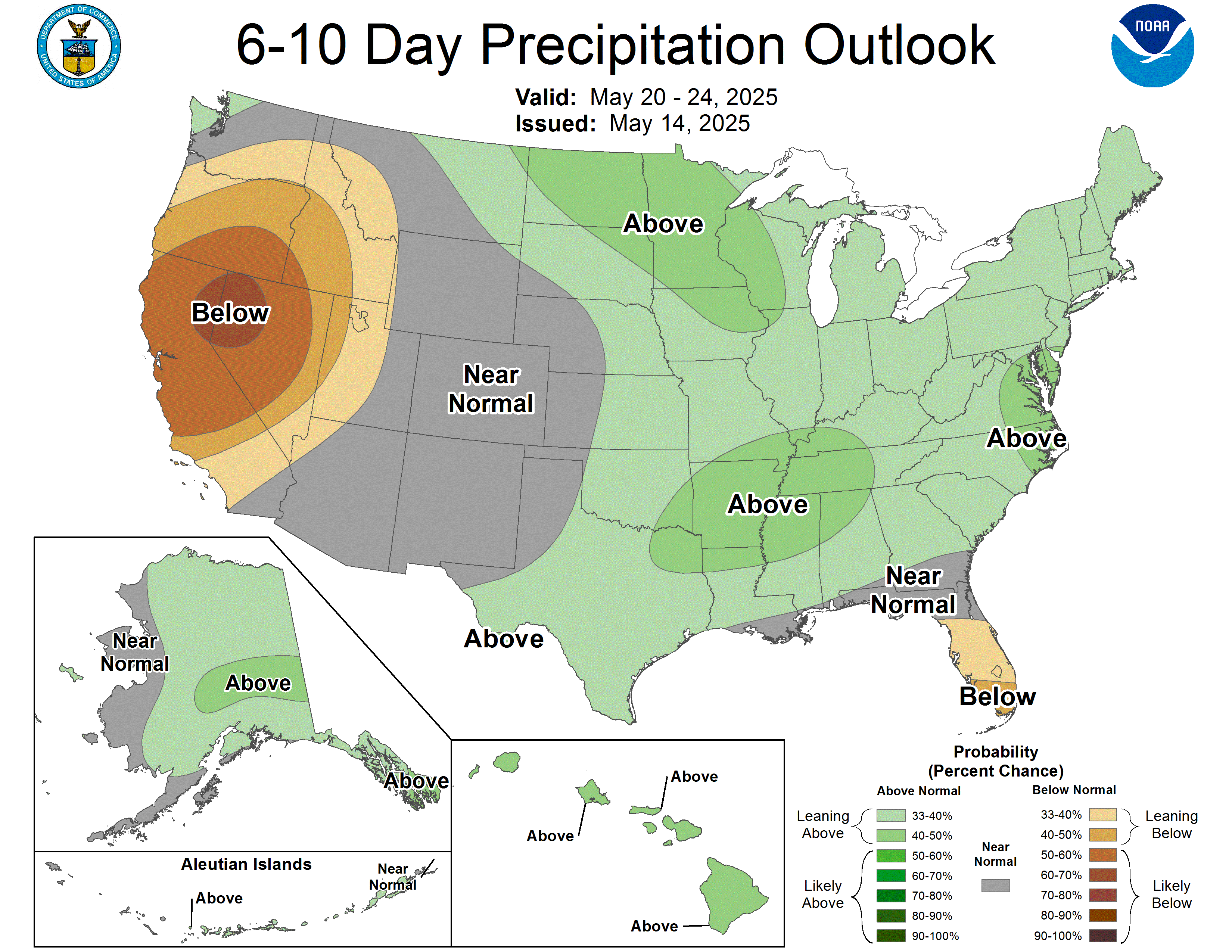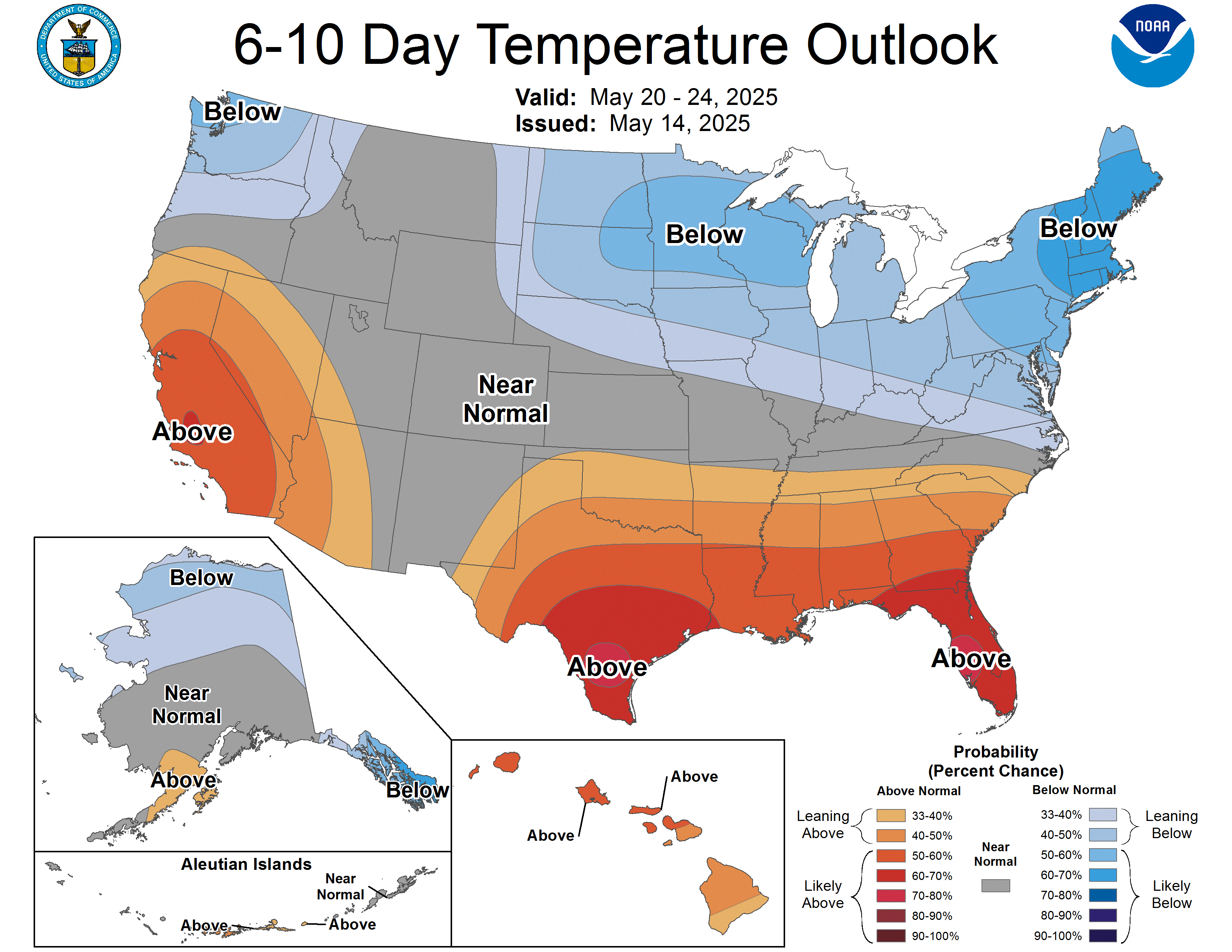Weekly Market Update 5/15/2025
|
|
Here is your weekly market update from the Garden City Co-op Grain Origination Team.
Trivia
-
What is the movie in which a character claims, "Nobody puts Baby in a corner"?
-
What city is known as the "windy city"? (Hint: No, it's not Garden City.)?
Answers at the bottom.
Market News
WHEAT TOUR 2025: The Wheat Quality Council's 67th Annual Hard Winter Wheat Evaluation Tour included 67 participants from 21 U.S. states and six countries, making a total of 196 stops across Kansas. The overall calculated yield was 50.5 bushels per acre, with northern routes reporting below-average yields and southern routes performing better. The forecast for the 2025 Kansas winter wheat crop is expected to be 345 million bushels, with an average yield of 50 bushels per acre. Condition ratings for winter wheat indicate that 7% is classified as very poor, 15% as poor, 30% as fair, 42% as good, and 6% as excellent. Currently, headed wheat stands at 71%, which is an improvement compared to last year and the five-year average. The tour addressed the increasing concern over the Wheat Streak Mosaic Virus (WSMV), which is negatively impacting crop quality. Despite some drought challenges in Southwest Kansas, recent rainfall has provided relief. Other issues noted included the wheat stem maggot and loose smut. On the final day of the tour, the estimated yield for Kansas wheat crops was recorded at 53.0 bushels per acre, with 7.4 million acres planted and 6.9 million acres expected to be harvested. The official production projection stands at 338.5 million bushels, based on data collected from 449 fields surveyed during the tour. As of May 1, NASS predicted the crop to be 345 million bushels at 50 bushels per acre. There are 3 to 8 weeks remaining until harvest, during which conditions could significantly impact yields. Potential risks include freeze damage, drought stress, and stripe rust.
CROP PLANTING PROGRESS: Favorable weather patterns across key growing areas continue to support a rapid planting pace. USDA reported on Monday that the U.S. corn crop is 62% planted, a 22 point jump from the previous week, and well ahead of the 56% 5-year average. Soybeans are also going in the ground fast, with USDA estimating the bean crop at 48% planted nationwide, up from 30% last week and safely above the 5-year average of 37%. Winter wheat conditions also saw a bump this week, up 3% week-on-week to 54% good-to-excellent nationwide – also ahead of the 42% good-to-excellent 5-year average. Kansas is reported at 61% good-to-excellent compared to a 57% 5-year average. Good wheat conditions and fast planting have put the pressure on commodity markets.
EXPORTS: Corn export sales came in higher than expectations this week at 66.0 million bushels, with South Korea, Mexico, and Japan this week’s top buyers. There were also 20 million bushels of new crop sales to Mexico and Honduras. Old crop corn exports continue to impress – this week pushed corn exports 6% ahead of the pace needed to hit current USDA estimates. Soybean exports were at the middle of trade estimates at 10.4 million, with 18.0 million bushels of new crop sales. Wheat had strong numbers in the new crop slot with 27.4 million bushels of sales, of which 10.0 million were HRW. Old crop sales were near expectation at 2.2 million bushels. Board pressure and a weaker US dollar are providing some support to wheat exports.
USDA RECAP: Corn generally saw no changes to the 2024/25 balance sheet on Monday, apart from an increase in exports of 50 million bushels – allowing a decrease in total world carryout values that aligned with estimates. For 2025/26, feed/residual usage and export values were both increased, up 150 and 75 million bushels, respectively. Ethanol usage was decreased by 5 million bushels; tightening total United States carryout to 1.8 billion bushels from the estimated 2 billion bushels.
Changes to the 2025/26 U.S. soybean balance sheet project an increase in exports by 25 million bushels, decreasing carryout and leaving everything else unchanged. Our first glimpse at 2025/26 shows a 23 million bushel decrease in available supply. Domestic crush is predicted to be increased by 70 million bushels, with exports and residual usage decreased by 35 and 3 million bushels, respectively.
Wheat food usage for 2024/25 was increased by 5 million bushels, lowering carryout to 841 million bushels, versus the 844 million bushels seen in April’s report. 2025/26 balance sheets increase U.S. wheat carry-in by 145 million bushels, coupled with a 50 million bushel decrease in production. Exports for 2025/26 are decreased by 20 million bushels, all-in-all increasing U.S. carryout by 82 million bushels to 923 million bushels.
Overall, there was a limited marketed reaction in response to the first supply and demand estimates for 2025/26. Attentions have turned back to planting progress and White House tariff headlines.
WEATHER: Beautiful weather ahead – today and tomorrow have highs in the 80s, with warm temperatures around to stay into early next week. A cool off comes on Tuesday, along with a decent chance of precipitation across GCC territory. The balance of next week levels out with highs in the upper-70s and 80s.
|
|
 |
Trivia Answers
-
Dirty Dancing
- Chicago
